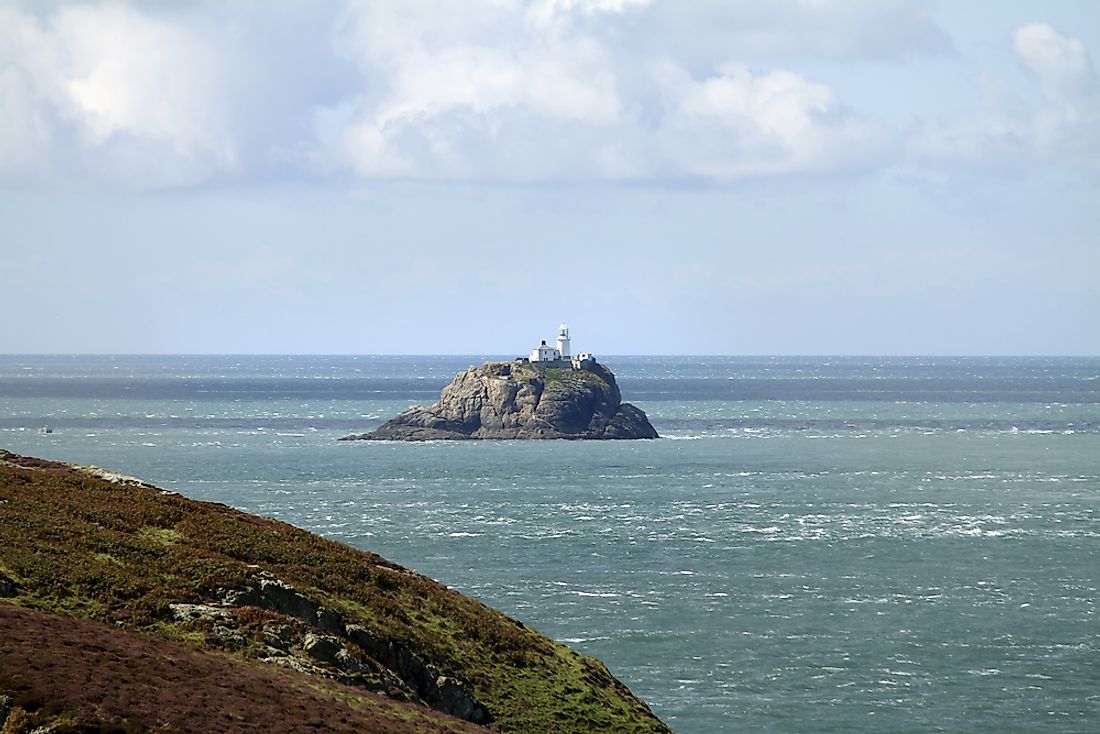What Is The Smallest Island in the World?

What is an Island?
An island is a section of sub-continental landmass surrounded by water. Islands vary in size with the biggest being Greenland which is made up of three islands linked by an ice-sheet. In 1861 the United Kingdom's government defined an island as "any small piece of land which has more than enough grass for summer grazing of one sheep or an inhabited area". Although determining the exact number of islands present in the world can be challenging, the Guinness book-of-records named Bishop Rock as the smallest isle on earth to host a building.
Bishop Rock, previously known as the Men Epskop in the Middle Ages, is the smallest island in the Atlantic Ocean which is famous for its unique lighthouse. Bishop Rock is on the Cornwall peninsula. During the late 13th century, when the Scilly Island was under John de-Allet, all convicted felons were taken to the rock and left there with a pitcher of water and a few loaves of bread. They were left there until the sea swallowed them.
The rock was famous for causing numerous shipwrecks with the earliest record of a wreck on the island being the Brig Theodorick on September 4, 1839. Another vessel which struck the rock was the Barque known as the Falkland in 1901, and this prompted the government to construct a lighthouse. The construction of the current structure was finished in 1858 after the original building was washed away. The structure was lit on September 1, 1858.
Bishop Rock: The Smallest Island in the World?
An 1818 report on the dangers of the rock to ships by the surveyor of the Duchy of Cornwall, proposed that the government should construct a lighthouse on the island. The government disapproved of the idea.The construction work began in 1847 after the Trinity-house did a survey. Engineer James Walker built a 120 foot structure with accommodation and a lighthouse at the top, but it was never lit since it washed away on February 5, 1850.
Walker started constructing the second structure in 1851. Construction of the stone structure was quite challenging since they laid the foundation stone below the water level. The engineer-in-charge was Nicholas Douglass who was assisted by his sons William and James. Despite the challenges, the lighthouse was finished without a loss of life, and its 1st light shone on September 1, 1858. The height of the structure was increased by 40 ft in 1882 under the supervision of William Douglass. The Bishop Lighthouse is the second tallest lighthouse in the United Kingdom right after Eddystone Lighthouse.
The idea of calling such a small rock an island is quite fascinating since according to the definition of an island stipulated by the British government, Bishop Rock does not have enough grass for a sheep. The Island is also not permanently inhabited. At higher tides, the lighthouse covers the entire rock, therefore, constructing it was quite a challenge for the engineers. The initial keepers moved into the island in 1858, but in 1992 the light was automated meaning that the rock might be uninhibited at the moment. The Guinness World Records still insists that Bishop Rock is the smallest isle with a building.











